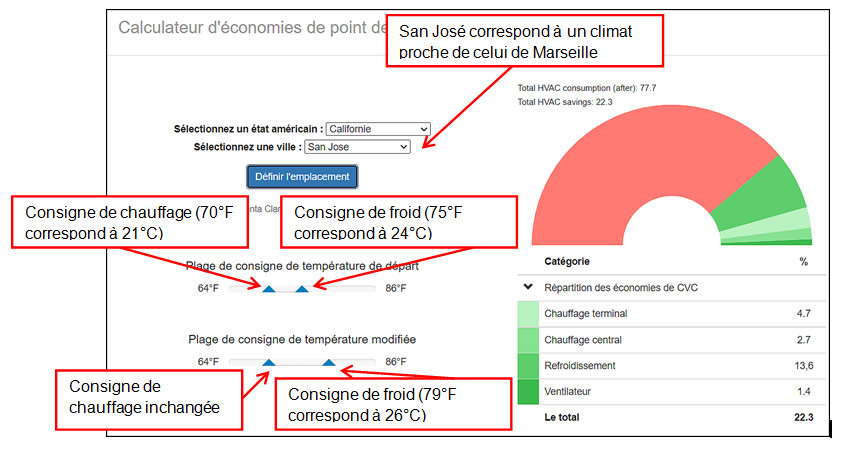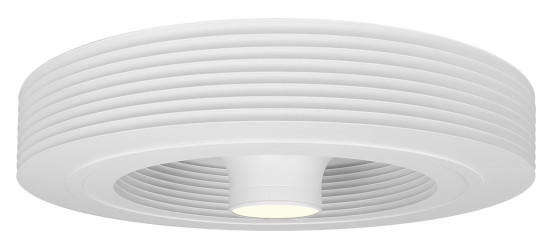Air movers and air conditioning: a marriage of convenience?
It’s summer, and in this season, a little thermal comfort is welcome.
This is when the question of the coupling between air circulation and air conditioning comes up.
Of course, there is a real physical difference between these systems. In energy terms, air mixing has little impact, whereas air conditioning has a high consumption.
Let’s take a look at this combination of air conditioning and ventilation in the warm season.
A passive and bioclimatic design to avoid the use of air conditioning?
Optimised building design, using the principles of passive design [1]and bioclimatism [2], often aims to limit or even completely avoid the use of air conditioning.
More and more frequently carried out by thermal design offices, dynamic thermal simulation (DTS) integrates the characteristics of the building and its environment. Internal heat inputs are also taken into account, whether they come from the operation of systems (lighting, computers, etc.) or from the body heat of humans themselves (between 80 and 100 W per person). The STD therefore makes it possible to estimate a priori the hours of summer discomfort, room by room..
For new housing or educational establishments, the regulations have been clearly pushing for several years to avoid air conditioning.
In a passive and bioclimatic design, coping with periods of high temperatures is then often associated with the installation of air movers which, on their own, provide sufficient comfort for the occupants.
However, there are many cases where this ideal scheme has its limits.
[1] winter and summer energy consumption close to zero
[2] consideration of the location
Existing buildings: how to deal with summer discomfort?
Some older buildings, with very thick walls and therefore high inertia, can withstand hot spells quite well without resorting to air conditioning, provided that the occupants implement simple practices. Limiting solar heat gain by closing shutters is one example.
Unfortunately, in many cases, especially for buildings dating from the 1948-1974 period, the discomfort often becomes unbearable due to low inertia or large glass surfaces. Therefore, in the absence of a global renovation that integrates summer comfort, air conditioners start to flourish on the facades.
The operation of these cooling units exacerbates the so-called “urban heat island”, an overheated area with all the possible defects. The dark asphalt floors accumulate solar energy, the lack of vegetation prevents evapo-transpiration… and the air-conditioning compressors send heat outside, creating a feedback loop, a vicious circle from which it should be possible to escape.
New buildings: good intentions and reality
At the corner of a street, a wart: an air conditioning compressor on an eco-designed building. Or a new eco-neighbourhood in which the air-conditioning systems have been installed after the fact. Or the great classic: the fake air-conditioning installation “in heating only mode”, theoretically dedicated to heating only, in accordance with the thermal regulations. After the building has been handed over and certified as compliant with the regulations, a complaisant technician comes and unlocks the system so that it works in cooling mode. With the kind cooperation of the air conditioning manufacturers, who know exactly what to expect.

In Zone H3/H2D (Mediterranean arc), air mixers are essential for summer comfort in order to meet the requirements of the RE2020.
Climate change: air conditioning to prepare for inevitable warming?
The scary speeches about global warming and the rising expectations of thermal comfort are leading to a sad reality. Air conditioning is becoming more widespread[3].
[3] See Observ’ER study, Monitoring the 2019 market for individual heat pumps: , page 20
Overseas France: air conditioning a must in summer?
In the inter-tropical DOMs, summers are often very hot (and humid, which increases thermal discomfort).
In these territories, the mixed operation of air-conditioning and air-movers is already very present, and can be very instructive for temperate zones.
Ceiling fans and air speed: what impact on the perceived temperature?
The presence of air mixers allows a gain in the temperature felt as a function of the air speed.
As shown in the Woods ventilation guide, an air speed of 0.7 m/s provides a gain of 2°C in perceived temperature.
| Air speed (m/s) | Equivalent cooling (°C) |
| 0,1 | 0 |
| 0,3 | 1 |
| 0,7 | 2 |
| 1,0 | 3 |
| 1,6 | 4 |
Figure 1 – Values from the Woods Practical Ventilation Guide, valid for average humidity and clothing conditions
Raising the air conditioning setpoint to save energy
Let’s take a 20 m² room with a ceiling height of 2.50 m², i.e. 50 m3 of volume.
In this room, a simple air mover is usually sufficient to achieve the desired comfort. For good performance air movers, the maximum speed power is close to 50 W.
For air conditioning, depending on the nature of the building, the requirements are generally between 25 and 50 W per m3. This is equivalent to a minimum power of 1250 W and a maximum of 2500 W.
For example, a ceiling fan represents between 1/20th and 1/50th of the power of an air conditioning system for the same volume.
It is clear that any degree gained by the air blower will result in air conditioning savings.
An American study, backed up by numerous field reports, estimates the energy savings per degree of air conditioning set point at between 7 and 10%.
The Center For the Built Environment (CBE) at the University of California, Berkeley, has an online tool to measure the impact of changing air conditioning set points on VRV (Variable Refrigerant Volume) systems.
The tool available here is used to set the heating and cooling setpoints.

Figure 2: View of the HBS setpoint calculator in Chrome browser
It appears that by raising the cooling setpoint by 2°C, the savings amount to 22.3%. It should be noted that the fan in the graph is a priori the VRV auxiliaries, not the air movers.
To make simulations on other cities in France, it is possible to use a weather comparator..
The example presented here shows that insofar as an air speed of 0.7 m/s makes it possible to gain 2°C of air-conditioning set point, and that the consumption of the air mixers represents a negligible part of the air-conditioning consumption, a gain of between 7 and 10% per increase of one degree of air-conditioning seems to be completely coherent.
Destratification for better homogenisation of freshness
The cold emitted by air conditioning units naturally tends to sink. The presence of a fan will allow the cold air to be distributed more evenly throughout the room, thus making it easier to raise the set point.
Breaking the directional flow of cold air
Some air conditioning systems tend to send air flows that create discomfort for people in the cold stream.
However, circulation rates (ratio of air flow to room volume) are at most 5 volumes per hour in air conditioning, whereas a fan coil unit will have a circulation rate of 138 volumes per hour at maximum speed[4]. The cold jet is thus broken up and better distributed in the room.
[4] Based on an airflow rate of 6900 m3/h for a room volume of 50 m3
The successful combination of air conditioning and air blower
It should of course be remembered that a good design of the building, whether new or renovated, makes it possible to limit or totally eliminate the use of air conditioning.
This being said, in cases where this design cannot be achieved, it appears possible to save energy while providing better thermal comfort, by favouring a coupled operation between cold production and air circulation.

Exhale the first vortex bladeless ceiling fan
You are a professional. A specific space is dedicated to you.
Find Exhale Fans Europe on Linkedin

